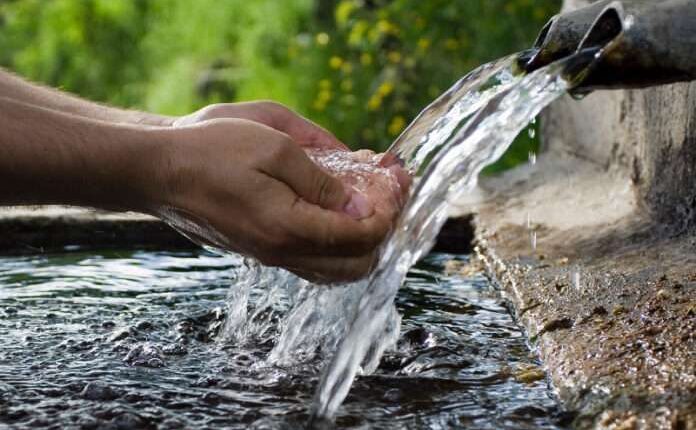Rice Field Pumping Program Can Increase Rice Production
By : Elisabeth Titania Dionne )*
Amid the challenges of extreme weather and limited water sources, the rice field pumping program has emerged as new hope for farmers. With a spirit of optimism, this initiative not only promises to increase rice production, but also raises the enthusiasm of farmers who had dimmed. Through pumping technology, it is hoped that irrigation will be more efficient and even, so that every inch of rice field can be optimal in producing quality rice grains.
President Jokowi’s optimism regarding the rice field pumping program provides great hope for increasing national rice production and farmer welfare. This program is designed to overcome various challenges faced by farmers, especially in terms of irrigation and resilience to extreme weather such as El Nino.
The implementation of water pumps on agricultural land is projected to increase the cropping index from one to two to three times a year. Better water distribution efficiency allows farmers to maximize the potential of their land, which previously could only harvest once a year due to limited water.
Apart from that, pumping also functions as an anticipatory step to face extreme climate change. With the pump, it is hoped that farmers can overcome droughts that often occur due to weather phenomena such as El Nino. This is very important considering that unexpected climate changes can threaten national food production.
In Bantaeng Regency, for example, President Jokowi has seen firsthand the positive impact of this program. Even though the need for pumps in the area reaches 150 units, the initial allocation of 81 pump units in 2024 has provided significant results. Farmers who previously could only harvest once, can now plant a second crop a year.
This program is not only about providing physical assistance in the form of pumps, but also educating and involving farmers in the process of transforming traditional agriculture into modern agriculture.
Minister of Agriculture Andi Amran Sulaiman emphasized that pumping is a quick solution to overcome climate threats which can drastically reduce food production. By using a pump, water from the river can be channeled into the rice fields, ensuring that the plants still get water even in the dry season.
The government also targets to achieve food self-sufficiency and become the world’s food basket quickly. The main focus currently is installing pumps, creating new rice fields, and transforming traditional agriculture into modern agriculture. This is a collaborative effort involving various parties, including state-owned companies such as PT Pupuk Indonesia (Persero)
PT Pupuk Indonesia fully supports the program to increase rice productivity in South Sulawesi by providing sufficient stocks of subsidized fertilizer and facilitating access for farmers. The Main Director of Pupuk Indonesia, Rahmad Pribadi, ensured the readiness and ease of redemption of subsidized fertilizer by farmers.
The government has increased the allocation of subsidized fertilizer from 4.7 million tonnes to 9.55 million tonnes in 2024. This aims to support increased agricultural productivity and maintain national food security.
Farmers who have registered as recipients of subsidized fertilizer only need to bring their KTP to the kiosk to make the redemption. Pupuk Indonesia is also tightening supervision of the distribution of subsidized fertilizer so that it is right on target.
Only farmers who meet certain criteria are entitled to receive this subsidy, such as joining a farmer group and being registered in the Agricultural Extension Management Information System (SIMLUHTAN).
Pupuk Indonesia provides a national subsidized fertilizer stock of 1,209,509 tons, consisting of urea and NPK. Of this amount, availability in South Sulawesi reached 819,803 tons. This stock includes subsidized urea, NPK Phonska, and NPK Kakao, which are stored in district/city warehouses to ensure farmers’ fertilizer needs are met for the next 14 days.
To ensure the smooth distribution of subsidized fertilizer in South Sulawesi, Pupuk Indonesia has prepared various supporting facilities, including warehouses, distributors, kiosks and field officers. It is hoped that all these efforts can optimize the use of subsidized fertilizer to increase agricultural productivity and farmer welfare, as well as maintain national food security.
The rice field pumping program initiated by President Jokowi has brought fresh air to the agricultural sector in Indonesia. With full support from various parties, this program is expected to be able to significantly increase national rice production and farmer welfare.
Even though there are still challenges that must be faced, optimism and collaboration between the government, BUMN and farmers are the keys to the success of this program.
Efforts to increase agricultural productivity through pumping are not only about increasing crop yields, but also about creating strong and sustainable food security. In this way, Indonesia can overcome various food challenges in the future and achieve its dream of food self-sufficiency.
As an agricultural country, Indonesia has great potential to become the world’s food basket, and the pumping program is one concrete step towards this goal. Let’s support this program together for the welfare of farmers and national food security.
)* The author is a contributor to the Gelora Media Institute Contributor
